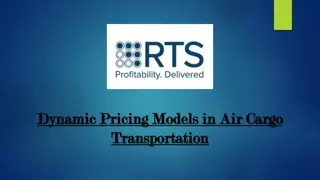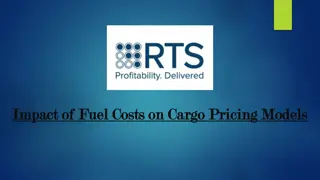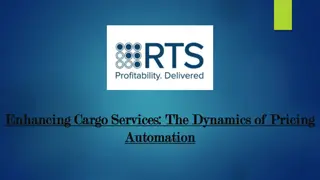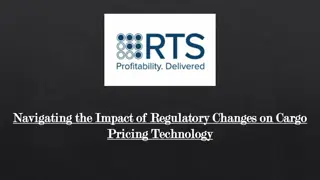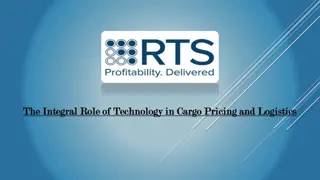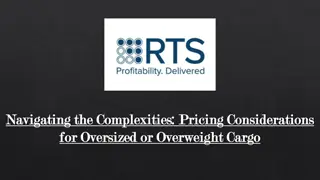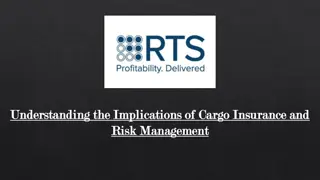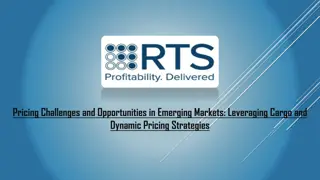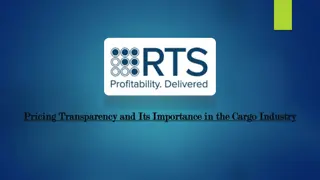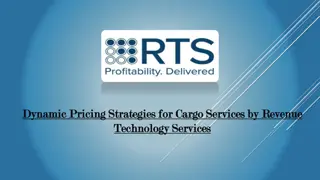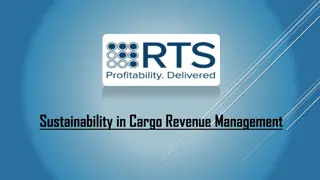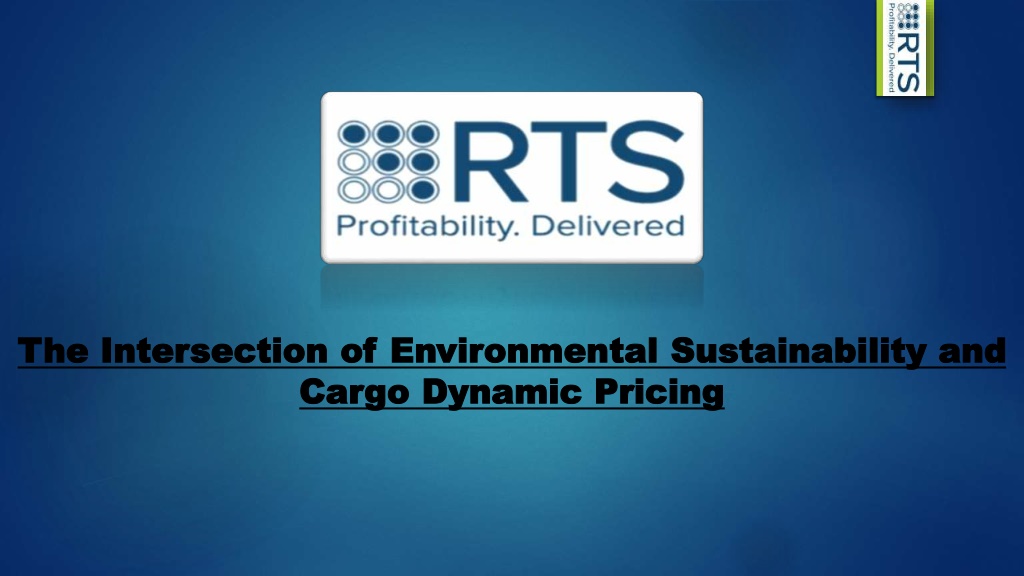
The Intersection of Environmental Sustainability and Cargo Dynamic Pricing
In the realm of modern commerce, the concept of environmental sustainability has transcended its status as a mere trend to become a crucial consideration for businesses worldwide. Concurrently, the logistics industry, particularly cargo transportation, grapples with the complexities of optimizing operations while minimizing environmental impact. This intricate interplay between environmental sustainability and cargo pricing is not merely a theoretical discussion; it profoundly influences revenue technology services and shapes the future of logistics.n
Download Presentation

Please find below an Image/Link to download the presentation.
The content on the website is provided AS IS for your information and personal use only. It may not be sold, licensed, or shared on other websites without obtaining consent from the author. Download presentation by click this link. If you encounter any issues during the download, it is possible that the publisher has removed the file from their server.
E N D
Presentation Transcript
The Intersection of Environmental Sustainability and The Intersection of Environmental Sustainability and Cargo Dynamic Pricing Cargo Dynamic Pricing
In the realm of modern commerce, the concept of environmental sustainability has transcended its status as a mere trend to become a crucial consideration for businesses worldwide. Concurrently, the logistics industry, particularly cargo transportation, grapples with the complexities of optimizing operations while minimizing environmental impact. This intricate interplay between environmental sustainability and cargo pricing is not merely a theoretical discussion; it profoundly influences revenue technology services and shapes the future of logistics. Cargo pricing, a strategy wherein prices fluctuate based on demand, capacity, and other variables in real-time, has become indispensable in the logistics sector. It enables companies to maximize revenue by adjusting prices dynamically to match market conditions. However, the traditional focus solely on profit maximization is evolving. Companies are increasingly recognizing the importance of integrating environmental sustainability into their business strategies, driven by both ethical considerations and regulatory pressures.
One of the primary ways environmental sustainability influences cargo dynamic pricing is through the implementation of carbon pricing mechanisms. Governments worldwide are imposing carbon taxes or emissions trading systems to internalize the environmental costs of transportation activities. These costs directly affect the operating expenses of logistics companies, necessitating adjustments in pricing strategies. Cargo dynamic pricing algorithms must now account for carbon emissions, incentivizing carriers to optimize routes, consolidate shipments, and invest in cleaner technologies to minimize their carbon footprint. Moreover, consumer preferences are shifting towards environmentally friendly products and services. As awareness of climate change grows, customers increasingly favor companies that demonstrate a commitment to sustainability. In response, businesses are integrating environmental considerations into their pricing strategies to align with consumer values and maintain competitiveness. Cargo dynamic pricing models must account for these changing consumer preferences, incorporating sustainability metrics into pricing algorithms to reflect the true cost of environmentally friendly transportation methods. Another factor driving the integration of environmental sustainability into cargo pricing is supply chain resilience. Climate change-related disruptions, such as extreme weather events and natural disasters, pose significant risks to global supply chains. To mitigate these risks, companies are reevaluating their supply chain strategies, placing greater emphasis on resilience and sustainability. Cargo dynamic pricing plays a crucial role in this endeavor by incentivizing investments in resilient infrastructure, alternative transportation modes, and disaster preparedness measures.
Furthermore, regulatory requirements are increasingly mandating environmental compliance in the logistics industry. From emissions standards to fuel efficiency regulations, governments worldwide are imposing stricter environmental regulations on transportation activities. Failure to comply with these regulations can result in hefty fines and reputational damage. Cargo dynamic pricing models must adapt to these regulatory changes, incorporating compliance costs into pricing structures to ensure profitability while minimizing environmental impact. In conclusion In conclusion, environmental sustainability is reshaping the landscape of cargo dynamic pricing in the logistics industry. From carbon pricing mechanisms to shifting consumer preferences and regulatory pressures, businesses are compelled to integrate sustainability into their pricing strategies. Revenue technology services play a pivotal role in this transformation, developing sophisticated algorithms that balance profit maximization with environmental responsibility. As the imperative for sustainability intensifies, cargo pricing will continue to evolve, driving innovation and reshaping the future of logistics.
THANK YOU THANK YOU



